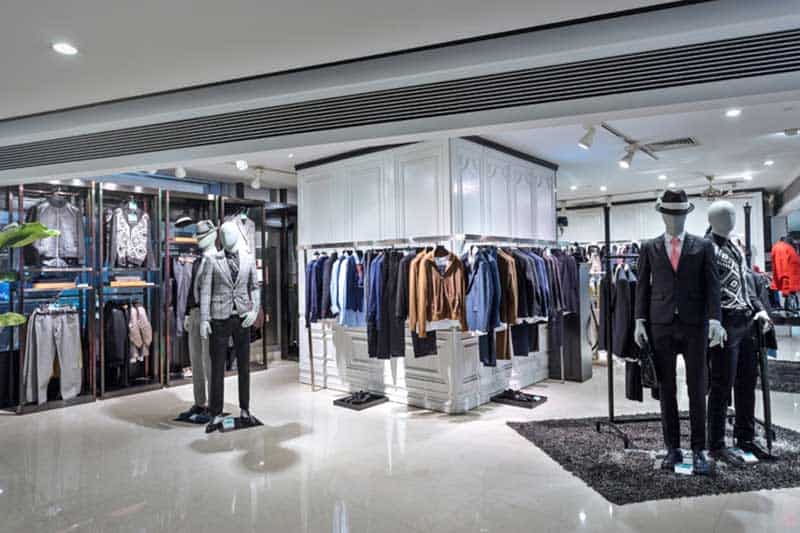When selecting new stock from a sales representative for your apparel store, there are a few strategies one should determine before selection. This preparation will allow for ease of selection, lead to best practices, increase sales and improve brand delivery.
Step One
Establish your apparel store brand and identify your customer base / segment(s)
An apparel store owner needs to identify what their brand is and what it represents. Identify what makes your brand unique to the marketplace. Create an offer that consistently delivers and communicates relevance to your target audience. One must know their brand and understand their customer intimately. This will ensure that product selection is on – brand and delivering to customer needs and wants. Should this be unclear or misunderstood, it may result in inconsistent sales and confusion among consumers.
Knowing your brand and customer means you should know exactly what is a right fit and what will work for your business.
Conduct a post – seasonal analysis of previous sales / seasons.
Conduct a post-seasonal analysis and focus on the changes from season to season (i.e. compare previous and current winter sales or previous vs. current summer sales). This will help you identify what worked well and what didn’t within a certain environment. Such analysis will help to avoid making the same mistakes or control your size and volume of buy on risky items moving forward.
During your post-seasonal analysis, it is important to note what sold well and what didn’t. These are your ‘good’ vs. ‘bad’ sellers. Ensure you do not repeat bad sellers and maximize your good sellers (i.e. repeat a buy, or increase volumes on updated versions of what sold well.) Looking at those numbers means you’re paying close attention to what your likes and what they dislike.
Identify and establish your strategy
As your apparel store approaches a new season, identify a clear strategy to create guidelines and a tool to measure how well your business performs. Your strategy may include the following:
- Set a target for sales / profit growth that needs to be achieved. This is determined using:
- stock on-hand
- rate of sale established (how quickly your items should sell)
- time on offer (how long it should sit in-store before new items are introduced)
- Increase brand presence and / or product variety by:
- Adding new brands to your offer
- Increasing current brand offer
- Increase market share. This is done in various ways such as:
- Strategically competing on price with competition (particularly on similar products).
- Increasing your target customer segments. This may be achieved by introducing a variety of brands / products that appeal to different demographics.
- Increasing your rate-of-sale on products to ensure that volume sold is higher than your competition.
- Consider offering discounts, specials etc. to assist with this.
- Increase brand awareness / fashion relevance.
Step Two
Identify Fashion Trends
To remain relevant, an apparel store owner needs to be up-to-date with what is trending or about to trend within the fashion and retail marketplace. The following resources are available for researching fashion trends:
- Catwalk shows offer the most up-to-date trends that will influence brands and retailers. The quicker the response and turn-around time to offer these trends to your customer, the better.
- Trend sites such as WGSN, Stylesite and Doneger. These are available only as annual subscriptions at a fee per head. (This may only be available to established businesses as apposed to individuals).
- Trade Shows offer designers and retailers the opportunity to see what trends are developing in fabrics and prints. They also allow small brands to display their new product ranges to a larger audience.
- Social Media sites such as Tumblr, Instagram, Pinterest and Facebook are great resources for trend finding. These platforms showcase the trends that consumers, small influential brands and fashion bloggers are creating. This is an important source that highlights what consumers are looking for and what they want more of.
Trend Breakdown
Trends are determined by the following:
- Fabric – fabric categories may be looked at in detail such as knits vs. woven vs. knitwear etc. Sometimes entire categories shift in trend, and so should your buy. Alternatively, specific fabrics within these categories are developed and need to be considered.
- Color – from neutrals to highlight colors. It is important to create a cohesive and well balanced color palette to bring trends to life in your store.
- Silhouette – silhouettes will often define your “key items” for the season. This can be specified within product categories namely: bottoms, tops, dresses and skirts. It can also refer to general shapes that influence product such as: high necklines, bellowing shapes, body hugging, etc.
- Print – these are the patterns and designs that derive from a particular influence and create a sense of mood. An example is: Paisley prints are trending due to the Bohemian look or stripes are trending due to Nautical influences.
- Key Items – these are the “must-have” items for the season that ensure fashion relevance.
Identifying trends makes the selection process much easier, so as to deliver the right items to your customer. This will ensure cohesive collections are built. One should present a lifestyle and/or prominent “looks” for the season to the consumer.
Step Three
Build Range
Once trends have been established, it is time to build the range. This should begin with a financial plan that offers you a ‘map’ of how much you are able to spend or buy. This results in sales and profit.
Key Tips For Range Building:
- Identify the number of different items within each category i.e. tops, bottoms, dresses, jackets etc. An exception would be if one only offers a specific category such as “denim jeans”. Ensure you cover your “Key silhouettes”.
- Identify how many color options you would like to offer for each item. It is good to cover your neutrals that sell quicker and offer new highlight colors that talk back to trend influences.
- Identify your percentage of print to plain items. This may shift as trends shift, but ensure a balanced offer of prints to plain items is created. If one is too heavy in plain, it becomes boring and too basic with no fashion look created. If one is too heavy in print, customers may become confused. They may have no clear understanding of a fashion offer. Your store may be too ‘cluttered’ and inconsistent.
- Cover your basics. One needs to define how much of their product offer should be ‘basics’. These are the items consumers need at all times in their wardrobe. This should become replenishment stock. This is a percentage of your total offer versus fashion items (based on seasonal trends).
- Identify your apparel store’s volumes. Basic items tend to sell greater volumes seasonally, while fashion items tend to be riskier. Identifying the right trends will help determine how much risk to place on these items and, thus, how much volume to buy of each.
- Ensure your stock levels offer correct size availability. There is nothing worse when customers find something they love, but cannot find it in their size. Identify a size curve and a size ratio.
- Establish what sizes you would like to offer your customer (size curve) and how much volume you choose to stock per size (size ratio). You may choose to stock more smalls vs. larges if that sells faster for you. This is a great measure to look at over time to see if you are optimizing your sales efficiently. The basics that run throughout the year should never be out-of-stock and always available in all sizes.
- A post-seasonal analysis will help show if certain silhouettes, colors or prints did or did not work. This will help you build your range and buy the correct volumes. This may take some time to establish as you get to know your customer better. Their feedback is always important to note in order to meet their needs consistently and build loyalty.
Step Four
Negotiate with your Sales Rep
This is often dependent on volumes bought and wholesale prices established by your sales rep. It is important to note the following when buying product:
- Identify where you want to fit within the marketplace. What sort of price range would you like to establish for your business. This will also determine the kind of consumer you target. If your apparel store prices are high and expensive, you may become niche and offer exclusivity. This often results in lower sale volumes, more emphasis on timeless appeal and quality. If your prices are low and you are perceived as cheap, you may appeal to a broader mass market that can contribute to higher sales volumes, but perhaps less profit gain.
- Identify what you believe your customer would pay for each item. This is determined by:
- who your target audience is
- fashion items versus basic items
- perceived quality
- brand awareness
Once you have a price point established, you are able to identify what your mark-up is limited to and negotiate further based on that.
Step Five
Trial new things
When something feels risky or it is not something you have sold before, use the option of trials. These are small volume buys to test your market. This may include testing a specific item, new product categories, new colors, fashion items that are less mainstream, new silhouettes, risky prints etc. This will allow time to identify if it is relevant for your customer. If it proves to be successful, you have the opportunity to turn on more volume (at the earliest delivery date made available by your sales representative), or choose to walk away from that business if unsuccessful.
It is advisable to keep testing the apparel store market and new ideas in order to keep your brand relevant and interesting.
Takeaway
- Establish a concrete audience and analyze your current numbers
- Look to trends and decide what is right/wrong for your store and audience
- Range build to figure out what you do and do not need
- Communicate clearly with your stock rep





